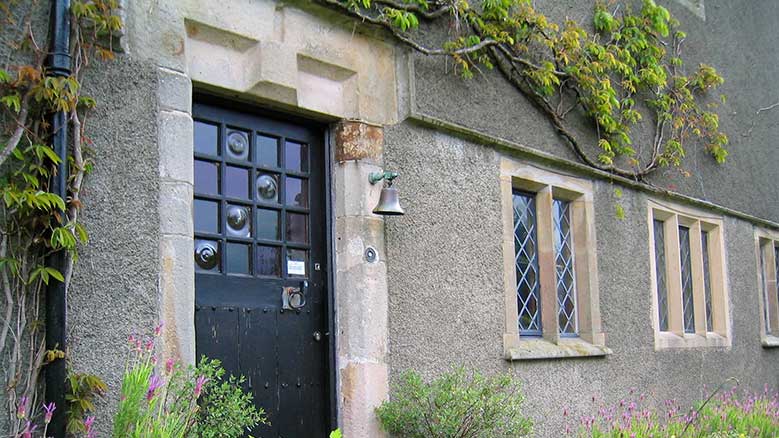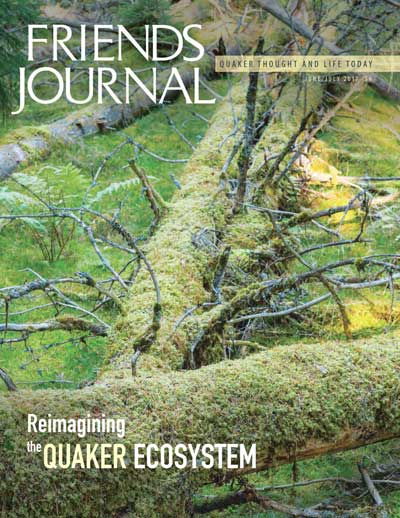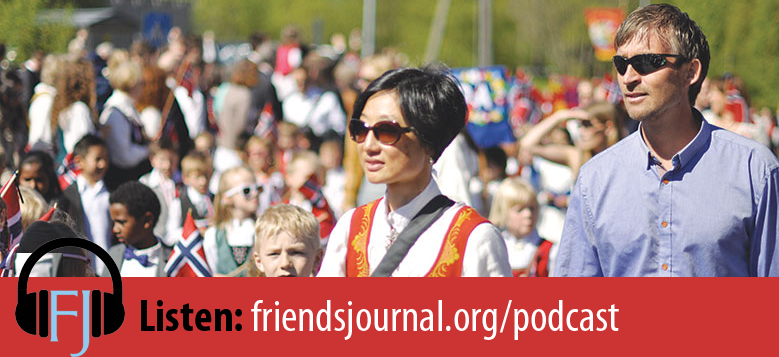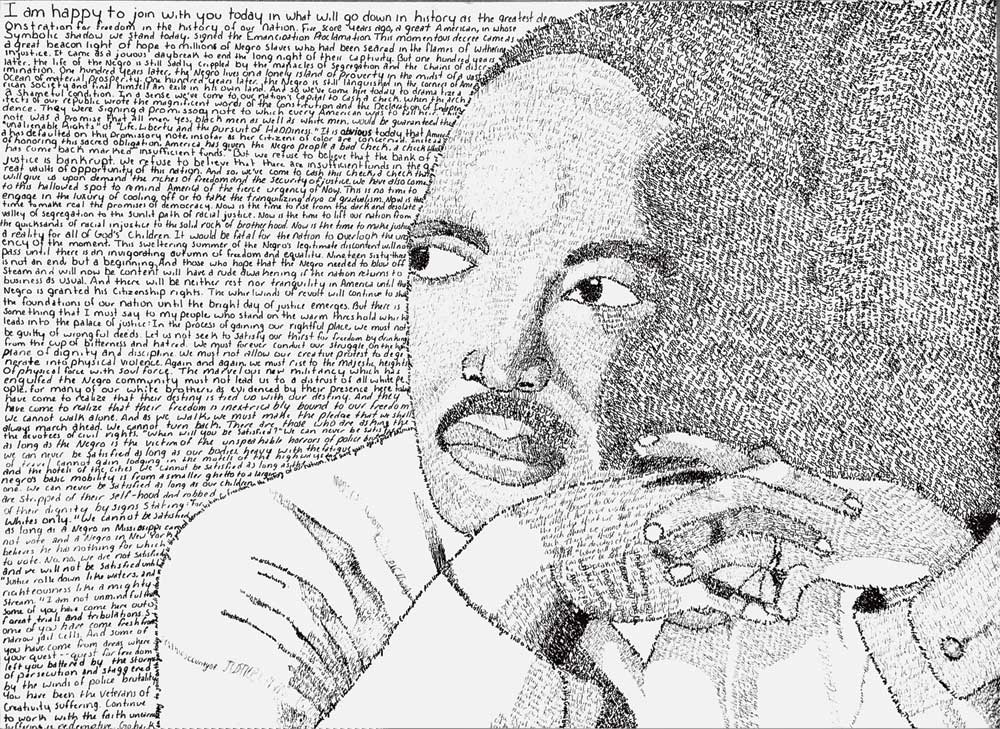
The shared lessons of strengthening a movement among Friends
My first introductions to early Friends characterized them as rebellious Spirit-led troublemakers who brought haphazard and serious disruption to the official church of England. It seemed to me that Quaker ministers wandered forcefully and randomly into public spaces and other churches directly—without the formal training, credentials, or funding that supported the preachers of the established church of the time. I wondered how this group could have possibly survived, and in fact thrived and grown, as a movement without more underlying organization. As I explored more, I learned about a strategic, direct attention to publishing tracts and books, and disseminating a high volume of printed works as well as spoken word shared by traveling ministers. In this way, this roaming band of faithful Friends was strategic, organized, and connected—and founded a movement with lasting and far-reaching influence.
What lessons can we take from this history of an early movement? As someone who travels with questions on how we connect and support faithful community in digital as well as brick-and-mortar spaces, I look at tools of communication and church-building that can be effective no matter what their platform. As my local meeting considers how to share a message, adopt a communications strategy, and faithfully carry a message of “who Quakers are” to the wider world, the call is clearly the same as what those early Friends heard. The tools are varied and different. The pervasive strategies that early Friends of the Quaker movement used hold some remarkable lessons in what we might use today in our rapidly changing, growing sense of networks and connections. In thinking more about these early Friends, I began to wonder if I could find the elements of contemporary church communication strategies in their actions.
There are a few specific elements that help me to connect the motivations and faithful support of the Quaker movement of both early and contemporary Friends. This list of “lessons” from these early Friends has emerged as encouragement for me, as I consider these questions of faithful message and purpose in my own meeting, wider yearly meeting, and the wider Quaker movement that we are a part of today.
1. Let the Life speak through you on all platforms.
It is adherence to the Spirit that is important. Early Friends considered their written tracts as important and representative as their preaching. This is why their publishing and distribution was both extensive, well discerned, and very controlled. Today our secular world might call that “branding.” What that really means is being consistent and recognizable in all places. We are faithful in those ways to our discipline. Then it was published tracts and preached messages—today it might just as easily be 140 characters on Twitter!
2. Have all information centralized in one place, easy to access
Friends recognized a need for a central hub for connections, dissemination of information, and standardization of publications and travel. Margaret Fell created this center for information and support at her house, Swarthmoor Hall, in North West England. Eventually this physical place housed the Kendal Fund for support of ministers. She insisted on there being a centralized address for letters and news carried by ministers. This gave the Quaker movement consistency and strength in being responsive and organized. Today? That might be our meeting website. A central place where we hold and share information with each other and the wider world, a consistent email address for new attenders to contact us and receive consistent information. We might post our minutes of importance, our spiritual messages to the world—sending them out as the early Friends did in this new way.
3. Consider how we use language publicly
Early Friends developed a careful consideration of use of language. The word “Quaker” seems to have been adopted by public ministers around 1652. Pamphlets published at this time have the word “Quaker” in a larger font size, emphasized for consistency (usually with a “the people scorned as,” etc!). There was no mistaking when a Friend had adopted the more public (even derogatory) label to make it their own. How do we do this today? Early Friends recognized that how we present to the world is important. Consistency in describing fully who we are, either avoiding insider jargon or using it and explaining it clearly when absolutely necessary and makes sense, was their process, and should be ours. Early Friends’ public adoption and use of the name “Quaker” created a name for a movement recognized instantly by those outside their smaller circles.
4. Assume your reach is wider than the in-person contacts
In 1653, there were 23 Quaker pamphlets in print. By 1659 there were over 150. The sharp increase filled a need for the words of Quaker ministers to be carried beyond their in-person visits. Ministers would often share and preach from their own writings, but then would leave the writings behind for young and growing Quaker meetings. They were handed out at public meetings. The author was present to answer questions. If a need for more support and writings was sensed, Friends would write back to Margaret Fell (and George Taylor and a few others) at Swarthmoor to ask for books to be sent as soon as possible. Edward Borough, for example, found himself in Ireland in a “great want of bookes”—and writing back to Fell for more. He needed to have a consistent supplier for his tools when he needed them most.
5. Know your audience
Why would Early Friends bother to use so much print, in a world where “that of God in everyone” meant sometimes people only minimally literate would be hearing their message? Because that message was for everyone, not just the hierarchy of the state church. As Friends realized their message was being heard in written form, they increased their publications at a surprising rate. They still were preaching, and visiting in person, and gathering local meetings. Do we make those assumptions today? Do our meetings only use verbal announcements at the end of meeting? Do we speak to visual learners, digital learners, and the Google calendars of all who might follow us on many platforms? We hope our message is for everyone; so how do we carry it in multiple ways, at varied times, to the audience of everyone?
6. Mobilize your volunteers
As the Quaker message spread, many newly convinced Friends were compelled to alter their very lives to be faithful to this message and movement. The seemingly haphazard lack of organization became a strategic process of sensing where ministers were needed, where there might be ears to hear, and where the Quaker movement might grow. Ministers checked in with letters sent back to their meetings, and with letters sent to Fell, Fox, and others as coordinators of the movement. Growing meetings and newer Friends could ask for visitors to be sent to minister to their condition. This represented adept responsiveness to growing faith, wherever it had sprouted. How do we do this today? Do our meetings respond to growing and deepening faith with readings, in-person conversations, and digital resources in a timely manner?
7. Have a system in place
This “sending forth” and “hearing back” needed a codified system to be effective, even in 1650. This network emerged as crucial in growing areas of the movement. How do we do that now? Do we respond quickly to newcomers who attend more than once? Do we welcome and offer support and help to those who seem ready to grow and learn more, or become members of our society? Do we have a regular system to respond to inquiries from newcomers, and a published phone number and someone to respond promptly on social media?
8. Tell your story
Stories are what move people. How do you share yours? Early Friends knew the tales of each others’ journeys, of scripture (our “forefathers”), and carefully listened to what was emerging in the time. They shared these stories in their growing network of experience. We still are storytellers. How we share the story has expanded in breadth and depth. Why we share that story is the deep call that early Friends heard as clearly as we do today—in video, in Facebook posts, in written books and journals. Those stories have a far reach and can encourage us to find more and deepen our faith.
These lessons of early Friends help to guide my current work among Friends in sharing an eternal message in contemporary ways. It may seem that these platforms and methods are new in ways Fell and others might never have dreamed of. And yet, I suspect those Friends, in faithful adherence to the message they were given, would today find many ways to share as they did then. Early Friends innovated their systems to become a faithful people of a movement. We are still called, sometimes in ways that look very different from those of 1665, to spread that message today.





Good job, Kathleen. You use the word truth. Quakers also, with Jesus (Luke 11:33-36), speak of light, and to let it shine.
Worcester (MA) Friends have the position of corresponding clerk who tries to answer the mail, email and voicemail promptly (sending thank you notes,) showing up on behalf of the meeting at interfaith and civic events, issuing a weekly reminder of upcoming events via email and also print for new attenders, and generally getting in everyone’s face.
Another Friend keeps the Face Book page going strong